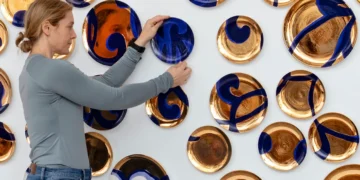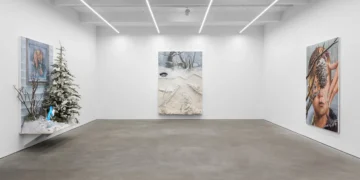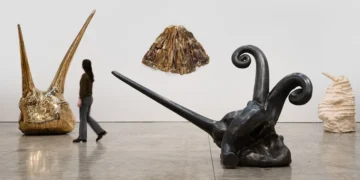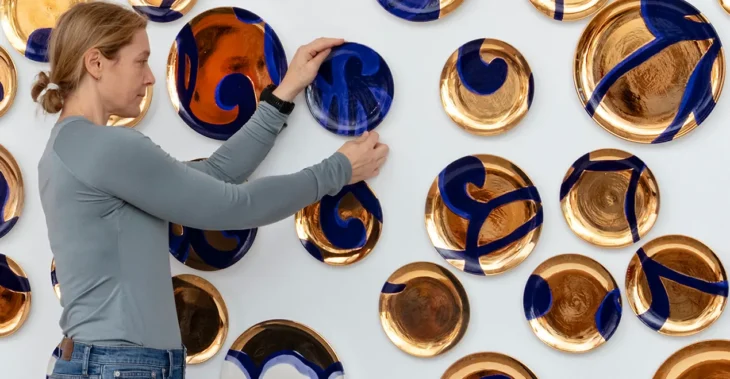
Molly Hatch stands at the intersection of fine art, design, and craft, redefining the boundaries of each through her monumental ceramic installations. Over the past decade, Hatch has gained recognition as a leading contemporary artist, celebrated for her ability to re-contextualize historic patterns and motifs onto hand-painted earthenware plates. Her practice is rooted in a deep engagement with art history, yet it is unmistakably contemporary, challenging viewers to reconsider the familiar language of ceramics through the lens of modern aesthetics and feminist critique. Hatch’s work, commissioned by prestigious museums and public institutions, invites audiences to experience ceramics not merely as functional or decorative objects, but as complex visual narratives that command space and provoke thought.
In her conversation with DSCENE Magazine’s Ana Markovic, Hatch articulates her approach as an “interruption and re-presentation of art history,” one that both honors and disrupts tradition. She draws on a global continuum of ceramic and textile patterns, often those appropriated by Western designers and historians, layering them across multiple plates to form cohesive, large-scale compositions. This method not only references the universality of blue and white ceramics, as seen in her “Amalgam” installation, but also interrogates the dynamics of cultural exchange, appropriation, and the shifting value of objects traditionally associated with the domestic sphere. Hatch’s installations encourage viewers to look beyond utility, prompting a reconsideration of what is deemed valuable or worthy of contemplation in the art world.
Central to Hatch’s practice is a nuanced exploration of gender and hierarchy within art and design. By elevating the ceramic plate, a symbol of feminine domesticity, to the status of fine art, she challenges the historical marginalization of women’s contributions, blurring the lines between art, craft, and design. Her thoughtful manipulation of scale, pattern, and context transforms everyday objects into monumental statements, inviting audiences to pause, reflect, and engage with the layered histories embedded in her work. Through both her words and her art, Molly Hatch offers a compelling commentary on the evolving landscape of contemporary art, where tradition and innovation are in constant dialogue.
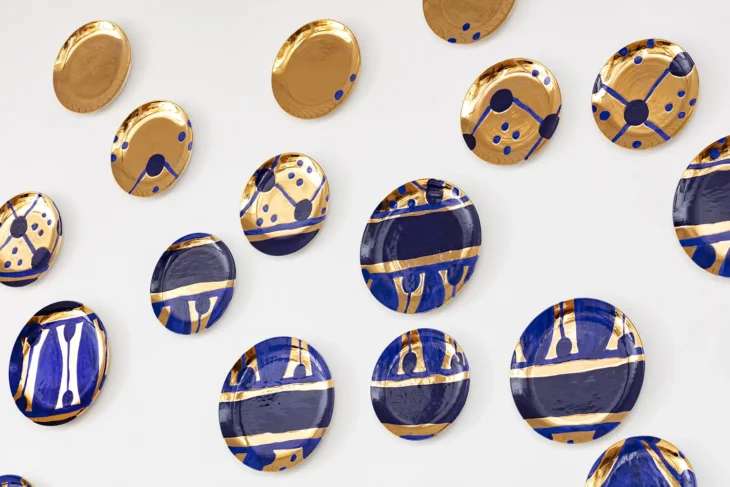
Your work brings together ceramics, painting, and historic design. How would you describe your aesthetic in your own words? – I would describe my work as an interruption and re-presentation of art history. My work leans on traditions and movements in history that are aesthetically familiar, directing the viewer to see art and art history in a new way. I work to claim space as a contemporary female artist and designer in the context of art history, where women’s perspectives and voices are generally underrepresented and undervalued.
What first drew you to ceramics – not as function, but as form and language? – I came to ceramics as a material in my undergraduate studies, and from the start, I worked to use the material to explore larger concepts of hierarchy in art, design, and craft. Function has always informed my work and the relationship my work has to the long history of ceramics. I have always approached ceramics as a surface for drawing and painting.
Because I am interrupting history by deconstructing familiar imagery across multiple plates, the work becomes a commentary on the history I am referencing. I am asking the viewer to look at imagery they are likely familiar with through a new lens, inserting a contemporary female perspective into art history.
Your installations remix historic patterns and turn them into massive wall pieces. What do you hope people notice when they see your work for the first time? – My hope is when people see the work for the first time they initially see the overall composition I have created. After a closer look, the work reveals its layers, composed of multiple plates, each an individual work in themselves, working together to make up the larger installation. Ideally, the universal relationship to the plate and its role in our daily lives makes the work accessible and allows for an intimacy with the work that gives the viewer pause to look longer.
Many people see plates as something functional or decorative. How do you want audiences to experience them differently through your installations? – The simple act of hanging plates on the wall, as one would hang a painting, immediately transformed into objects to be viewed and contemplated. Because I employ painterly concepts of both abstraction and representation in the work, my installations ask the viewer to rethink the source imagery as well as the traditional function of the plate. I am ultimately asking the viewer to consider the plate as one would consider a painting.
Historical decorative arts are central to your practice, but your work reads as firmly contemporary. How do you keep your references from feeling nostalgic? – Because I am interrupting history by deconstructing familiar imagery across multiple plates, the work becomes a commentary on the history I am referencing. I am asking the viewer to look at imagery they are likely familiar with through a new lens, inserting a contemporary female perspective into art history.
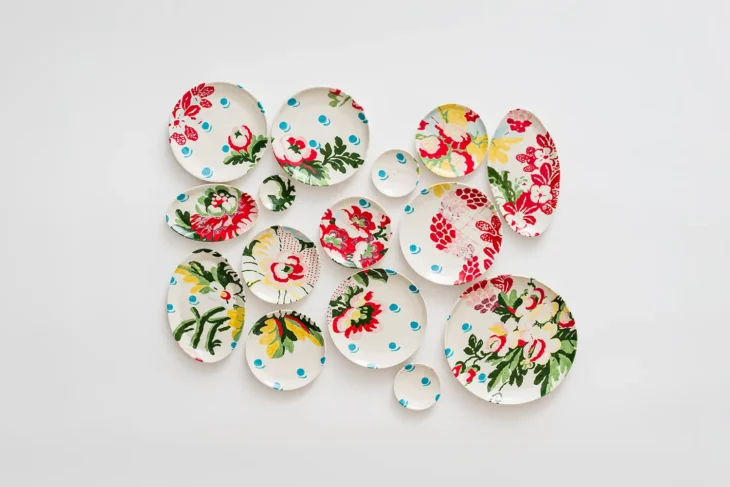
From Moroccan tiles to Chinese silks, you pull references from all over the world. How do you approach reinterpreting these traditions while still making them your own? – I typically choose patterns and motifs that have been appropriated by Western historians, such as Owen Jones, or designers like Christopher Dresser. I often reference historic ceramic surface patterns from objects that were made for export–made specifically for western consumption. The work often questions what is part of my cultural heritage, what is part of the larger ceramic continuum and examines appropriation, class and feminist concepts in the long global history of cultural exchange and trade.
Historically, women’s contributions in ceramics and textile design were often labeled as craft rather than art. How do you see that perception evolving today? – By making installations that belong in the grey area between art, craft, and design, the work in itself aims to break down categoric perceptions. Employing functional ceramic components as a painting surface points to the history of women and craft. The ceramic plate is a domestic object associated with daily use, less valued than art. My hope is that my work is actively shifting perceptions of what is valuable, what is art, breaking down perceived categories and hierarchies in the art world.
RELATED: Between Silence and Silk: Gurjeet Singh for Jaipur Rugs
“Amalgam” at Sarasota Museum of Art integrates influences from five global ceramic traditions. How do you maintain cohesion in such culturally layered projects? – The cohesiveness of “Amalgam” comes from the global shared history and love for blue and white ceramics. The work is a bricolage of blue and white motifs from all over the world. I have created a new blue and white pattern that almost anyone could find their own cultural heritage within.
“Physic Garden” and “Amalgam” both use scale to command space. What shifts in your thinking when you’re planning something site-specific and monumental? – The act of enlarging historic surface imagery like I have in creating “Physic Garden” emphasizes the painterly quality of the Chelsea Porcelain originals. This scale shift demands that the viewer’s eye to oscillate between focus on the more cohesive overall installation and the abstraction depicted in each individual plate. The shift in scale allows for a greater exploration of painterly concepts in the work.
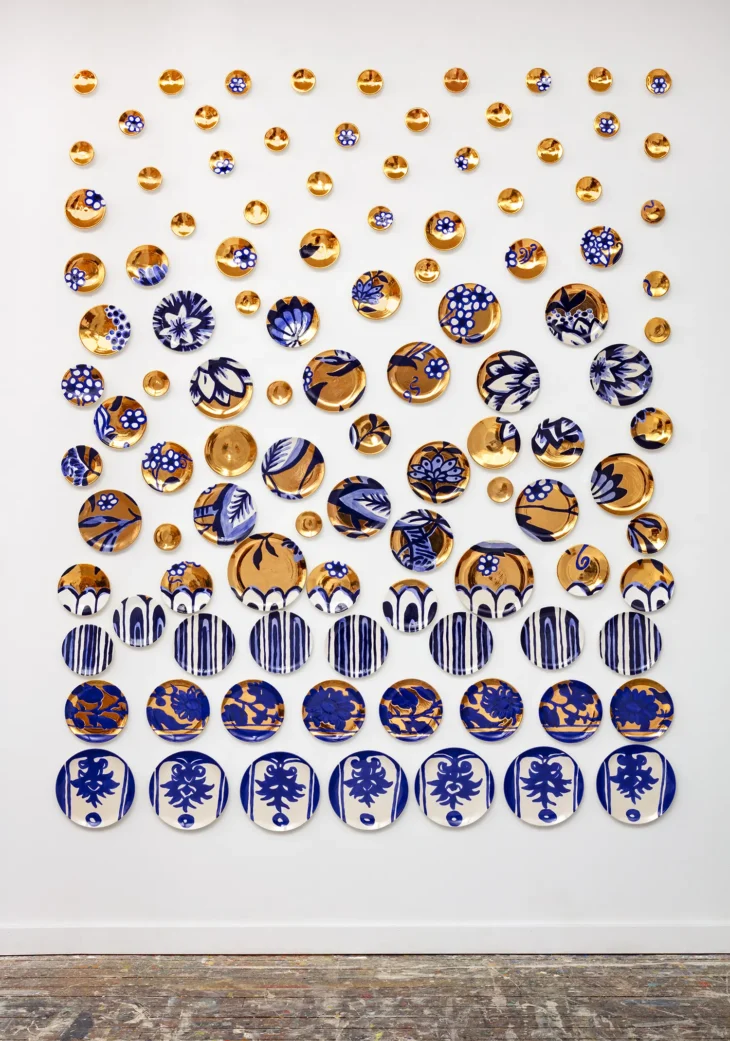
You’ve worked with Tiffany & Co., translating antique brooches into enormous ceramic murals. What was it like transforming jewelry into architecture? – I approached working with Tiffany & Co. no differently than I would in sourcing inspiration from any museum collection. I started my research by reading as much as I could about the history of the company and visited the Tiffany & Co. archives to gather source material for designing the works they have commissioned. Because of the nature of jewelry and the history of the company, the development of the concepts for Tiffany & Co. led to an entirely new way of making work. The ongoing body of work Tiffany & Co. has commissioned has pushed my work even more into the sculptural space.
When you visited the Tiffany archives, what stood out most to you – and how did that influence the brooch-inspired pieces you created? – The Tiffany & Co. archives were wonderful to visit and the archivists were incredibly helpful and informative. To make the most of my access to their archives, I did all of my research prior to visiting so I would know exactly what to ask the archivists to pull for me to consider. The concept for the brooch inspired pieces largely came from researching the history of the Tiffany & Co. windows and how the company presents itself commercially over time.
If you could reimagine any historical object into a contemporary ceramic piece, what would you choose – and why? – It’s funny you ask, I feel I get to do this already.
Discover more of Molly’s work in our gallery:
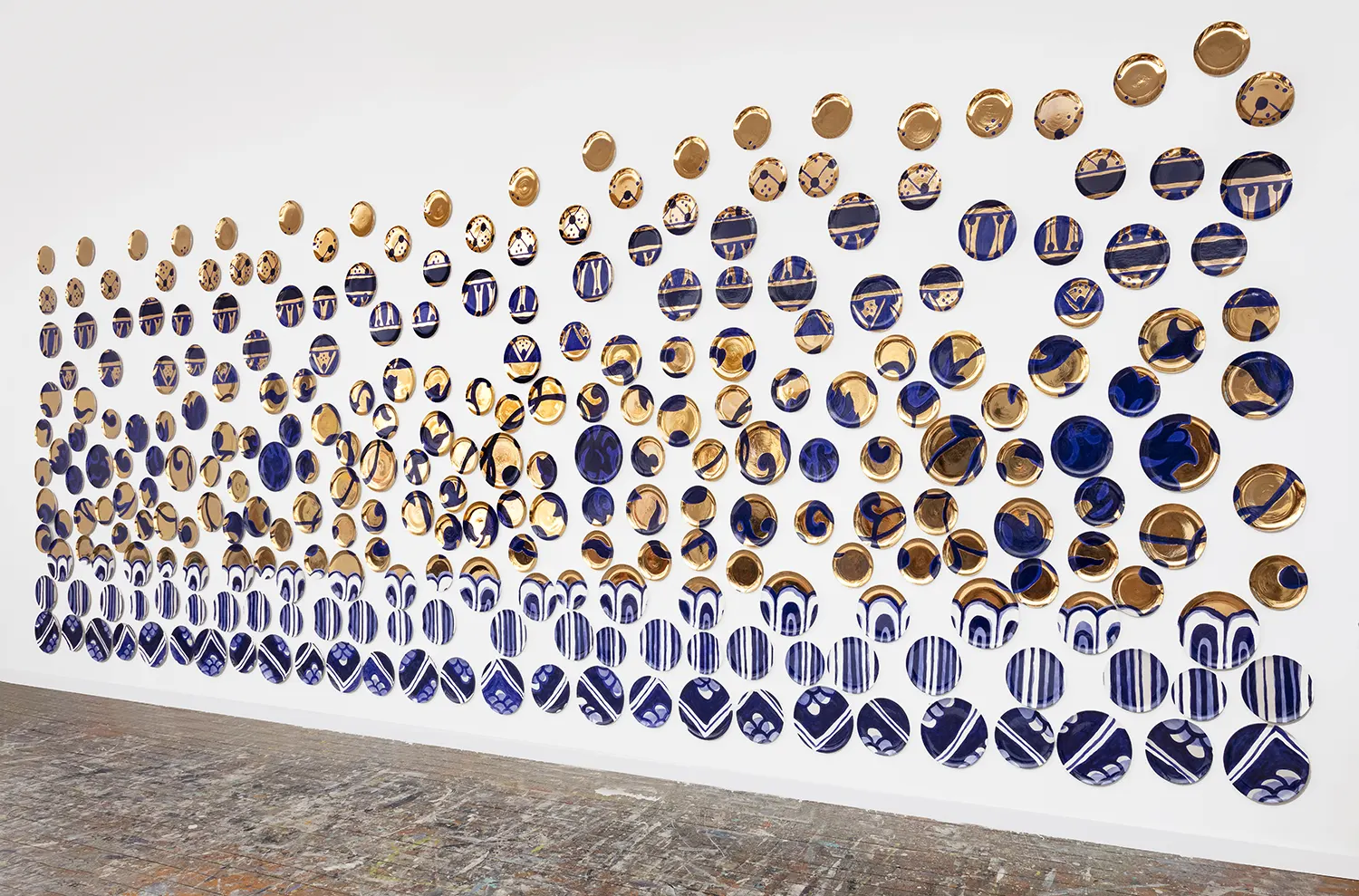
Molly Hatch is represented by Todd Merrill Studio in New York, for more of her work visit: mollyhatchstudio.com.
Explore DSCENE magazine’s art page.
